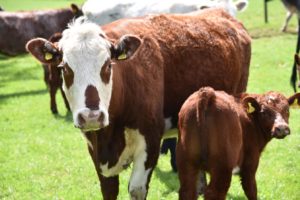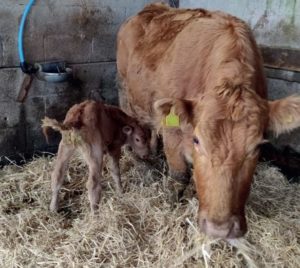Health
As well as timely articles on health issues, our team of vets have created some specific health information on cattle, these include technical notes, podcasts and videos. There are also numerous industry driven resources on cattle health, links can be found below.

Disease Management
Any disease or ill health in livestock can have a negative impact on production through reduced growth rates, fertility, and rearing ability. Poor or prolonged performance will result in a rise in input costs, an extended period to sale, potentially reduced market value, and in some cases, increased mortality rates which will also result in a higher carbon footprint for the farm business.
How to Spot Q Fever and What Action to Take
The disease Q fever is caused by the bacteria Coxiella Burnetii which can infect cattle, sheep and goats. It can also cause disease in humans, usually with ‘flu-like’ symptoms which can occasionally be severe and long lasting. This article highlights some of the clinical signs to look out for, and what actions to take. Read more>>
Technical Note 743: Johne's Disease In Cattle
Johne’s disease (also known as paratuberculosis) is an infectious wasting condition of cattle and other ruminants. It results in progressive damage to the intestines of affected animals and in cattle results in profuse and persistent diarrhoea.
While cattle remain susceptible to infection throughout their life, they are at their most vulnerable in the first few months of life. The advanced clinical signs of the disease (diarrhoea and weight loss) are rarely seen in cattle under two years of age. Most commonly these clinical signs are seen in cattle aged three to five years. Read more>>
Cattle Health Factsheet
This factsheet aims to highlight the general considerations for cattle health and what to look out for. It should be used as a guide for when to seek veterinary advice, rather than being used to decide when an animal requires treatment. However, prevention is better than cure as once an animal has become ill, any treatment may only be symptomatic, not curative. Read more>>
Antibiotic Usage Tool
Antibiotics are vitally important when required on farms, but we must all play a part in ensuring they are available and can be used effectively for many years to come. Antibiotics are primarily only effective against bacterial infections and have no action against viruses.
Vets at SRUC have designed a tool, to input your annual antibiotic usage for rumen livestock. This will give you and your vet the knowledge of your use for sheep, beef and dairy and allow a baseline to be set for future targets. Read more>>
What Are Antibiotics?
This article aims to provide a basic background to improve understanding of how important antibiotics are and how we can all play a part in ensuring they are available and can be used effectively for many years to come. Read more>>
What Antibiotic Should I Choose?
Following on from the What Are Antibiotics this factsheet looks at different types of antibiotics which are available, along with their uses.
Calf Scour - A Practical Guide
Scour is a common problem in the first weeks of a calf’s life, and it can be a cause of significant mortality – in fact in one survey 48% of farmers had lost animals to scour in the previous year. Even when the calf recovers, the labour required to nurse a sick animal as well as the resulting loss in growth rate both have a cost. This guide covers the causes of scour as well as how to treat appropriately when it occurs. It also discusses important aspects of management which can help prevent cases in the first place, as well as ensuring healthy, vigorous calves. Read more>>
Technical Note - Pneumonia In Beef Cattle
- Calf pneumonia is a significant source of financial loss in beef production.
- It is a multifactorial disease and husbandry and management factors are important triggers for common infections micro-organisms to multiply and cause pneumonia.
- RSV, Pi3 and IBR are the most important viruses and vaccines exist to protect against them.
- Assessing and correcting the management and vaccination of calves is necessary to control costs and improve the efficiency of production.
- A pneumonia control programme should be part of the health plan for the beef herd. Read more>>
Liver Fluke Factsheet
Fluke is a complicated subject, but this short Practical Guide explains the essential information you need to know to protect and treat your flock accordingly. With changes in weather patterns, it is important to test first and use the correct treatment which is appropriate for the time of year. Ensuring the correct products are used throughout the season is vital to reduce the risk of resistance, so that treatments remain effective for years to come. Read more>>
Technical Note - Treatment & Control Of Liver Fluke In Cattle & Sheep
- Investigate any unexplained losses or disease that could be due to liver fluke.
- Include liver fluke treatment and control as part of your head health plan.
- Assess the impact of liver fluke and effectiveness of treatment and control measures.
Sign up to the FAS newsletter
Receive updates on news, events and publications from Scotland’s Farm Advisory Service











